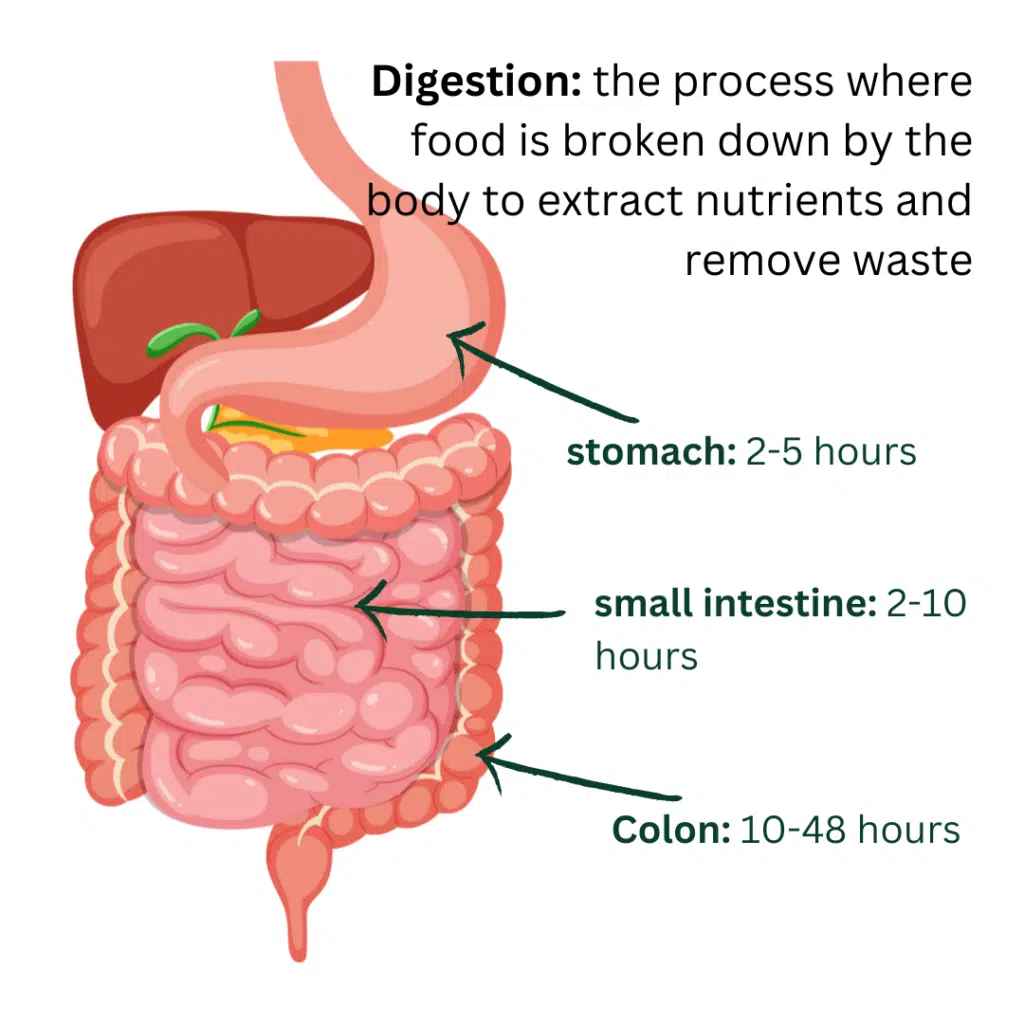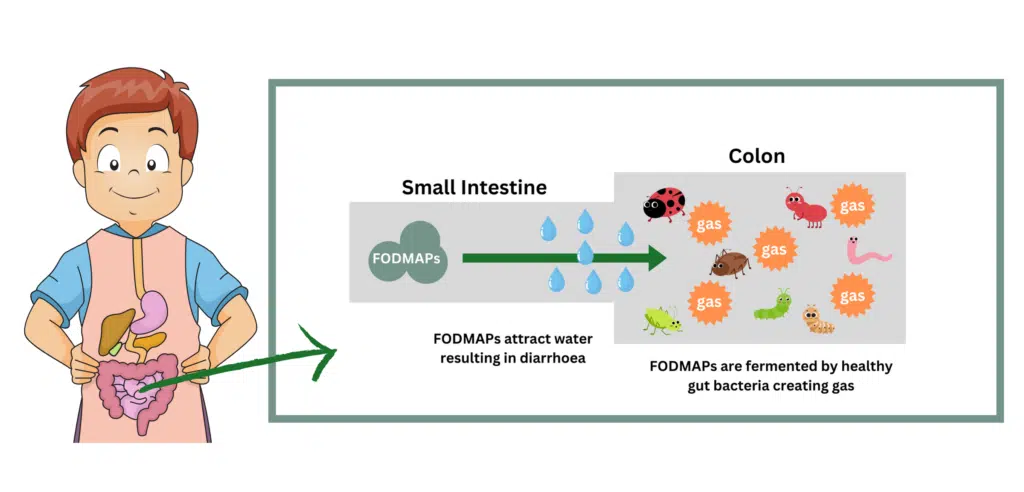You’ve just finished breakfast, and 30 minutes alter you’re rushing to the bathroom. Was it:
- Breakfast
- Something you ate yesterday
- That burrito a week ago
- All of the above
We see a lot of people targeting the food that ate last, it seems the obvious choice. But you may be surprised to know that if it’s FODMAPs that were to blame, then it is most likely a food eaten yesterday. This article will explore what happens inside the body when you eat FODMAPs, why they can result in IBS type symptoms for some people and how long after eating a high FODMAP food you might notice symptoms.
What happens when we eat high FODMAP foods?
0-4 hours: Food passes down the oesophagus into the stomach. The stomach acts like a large blender and mixes the meal up into ta smoothie type consistency. After this, the stomach will slowly release the smoothie mixture into the small intestine.
4-10 hours: In the small intestine, enzymes continue to break down food into single molecules so the body can absorb the nutrients that it wants (carbs, fats, proteins, vitamins & minerals) across the wall of the intestine into the blood stream.
10-48 hours: Any part of the food that is not broken down and absorbed into the body stays in the digestive tract and continues its path to the colon and then leaves the body when you open your bowels.

When it comes to FODMAPs, these are types of carbohydrates that are not absorbed from the small intestine into the body. Instead, they travel to the colon with the rest of the leftover food matter. It’s here in the colon about 10 hours after the food was eaten, that two processes occur that can cause problems for some people.
- Certain FODMAPs are highly osmotic (they draw water into the intestine). Because of this, they create pressure within the gut, and often cause diarrhea when this water leaves the body
- FODMAPs are fermented by the bacteria that naturally live in the large intestine. Although this is a normal and healthy process, it can very quickly create large volumes of gas. For those with a sensitive gut (i.e. IBS) this can result in abdominal distention, bloating and cramping.

In the average adult, the entire digestive tract is about 9 meters long, with the colon being the last part that waste products travel through before leaving the body. In most cases, it will take approx. 4-24 hours for the FODMAPs to pass through the stomach and small intestine before arriving in the colon and potentially causing IBS symptoms like gas, bloating, cramps and diarrhea.
But I get symptoms within 30 minutes of eating, how can this happen?
Your body is a finely tuned machine that has many moving parts, and a gastro-colic reflex is one of these. At any point in time, most people will have about 24 hours’ worth of food in their digestive tract. When food arrives in the stomach it will send signals to the small intestine and colon to let them know that there is more food coming and they need to move things along to make room. If the garlic bread you ate for lunch yesterday is sitting at the end of the small intestine, the gastro colic reflex will them push it forward into the colon potentially triggering symptoms.
Some things to know about Gastro-colic reflex:
- It’s normal and the way our bodies were designed to work efficiently, in some people more efficiently than others.
- It’s usually strongest in the mornings but can happen at any time of the day.
- Gut irritants like caffeine, spicy food and alcohol can exaggerate it.
- Stress (chronic or acute) can trigger the gastro colic reflex. You can read more about stress and its impact on IBS symptoms here.
How long do symptoms last?
In most cases, FODMAPs will pass through the body and be flushed away within about 1-2 days. However, it can take a few days for the nerves around the intestines to calm down and relax again.
Fun fact:
You can test your own gut transit time by eating corn. Corn is not well broken down and often passes through the intestines and comes out the other end intact. Eating corn and then timing how long it takes to see it come out the other end can give you an idea of how long it takes for food to pass through your body.
Final thoughts
Pinpointing food triggers for your symptoms can be tricky. Although it’s easy to blame your most recent meal, if FODMAPs are involved, then its seldom the case. Understanding how your body works and why FODMAPs can trigger IBS symptoms goes a long way towards helping you manage your IBS more effectively.
Of course, FODMAPs are not the only reason people get IBS type symptoms. There are other food intolerances which can present with identical symptoms but involve different foods and work in different ways. If things are just not adding up and you’re ready to end the frustration, reach out and make an appointment with one of our IBS specialist dietitians here.








One Comment
Thank you , this has explained things really well and easy to understand .